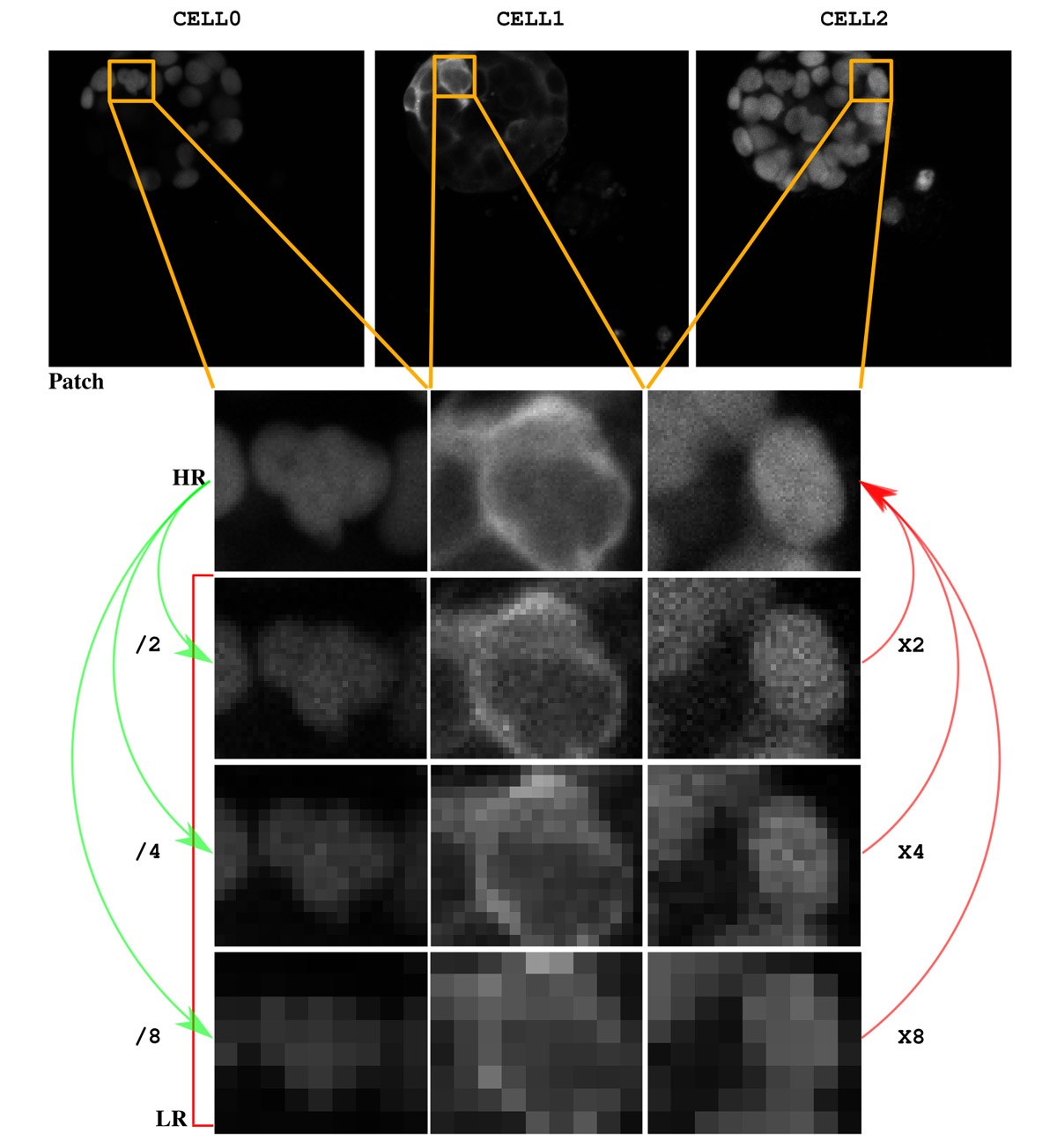SR-CACO-2: A Dataset for Confocal Fluorescence Microscopy Image Super-Resolution (NeurIPS2024)
Confocal fluorescence microscopy is a widely used technique for visualizing biological processes at the cellular and subcellular levels. It produces high-quality 3D images of thick samples, but comes with known limitations such as photobleaching and phototoxicity from intense light exposure, especially when imaging living cells.
Reducing light exposure can prevent cellular damage, but often lowers image quality. Single-image super-resolution (SISR) techniques based on machine and deep learning help overcome this trade-off by enhancing low-resolution (LR) images to produce high-resolution (HR) ones. While these methods perform well on photo-realistic datasets, their use in confocal microscopy is still limited by the lack of open data.
About the SR-CACO-2 dataset
To bridge this gap, our lab developed SR-CACO-2, a publicly available dataset designed to support SISR research in microscopy.
Dataset Highlights
- 2,200 images of human epithelial Caco-2 cells (ATCC HTB-37)
- 3 fluorescent markers
- 4 resolution levels
- 9,937 image patches for training and evaluation
- 3 upscaling factors: ×2, ×4, ×8
Sixteen state-of-the-art SISR methods were benchmarked using SR-CACO-2, showing that producing realistic high-resolution textures remains challenging.
The dataset is available under the Creative Commons license (CC BY-NC-SA 4.0).

License / Download
SR-CACO-2 dataset is licensed under Creative Commons Attribution-Non Commercial-ShareAlike 4.0 International license (cc by-nc-sa 4.0). The dataset is available for direct download via this link: Download SR-CACO-2.
Voir la citation BibTeX
@inproceedings{belharbi24-sr-caco-2,
title="{SR-CACO-2}: A Dataset for Confocal Fluorescence Microscopy Image Super-Resolution",
author="Belharbi, S. and Whitford, M.K.M. and Hoang, P. and Murtaza, S. and McCaffrey, L. and Granger, E.",
booktitle="NeurIPS",
year="2024"
}
Contact us
For any questions, please write to the director of LIVIA: eric.granger@etsmtl.ca.
Acknowledgments
This research was supported in part by the Canadian Institutes of Health Research, the Natural Sciences and Engineering Research Council of Canada, and the Digital Research Alliance of Canada.


